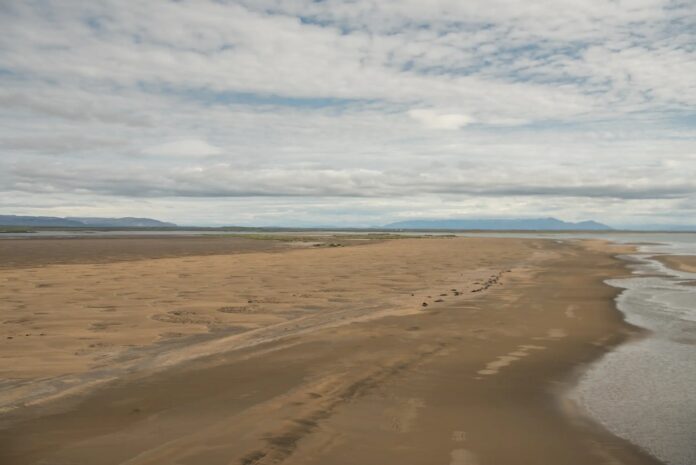Landowners at Laxárbakki, in the southern part of Snæfellsnes, plan to build a large tourism development, including a bathing lagoon. The Icelandic Institute of Natural History opposes the plans, as the area contains extensive, undisturbed wetlands.
A five-star hotel with 45 rooms, a wellness centre with open-air pools, a restaurant, a helicopter landing pad, and recreational cabins are among the developments proposed by Laxárbakki Resort, which aims to build on the Laxárbakki property in Eyja- og Miklaholtshreppur.
The owners of the company are Ólafur Ólafsson — often associated with the company Samkip — and his wife Ingibjörg Kristjánsdóttir.
The buildings would total around 45,000 square metres. The hotel would be the largest, at around 15,000 square metres. There are plans for 1,750 square metres of open pools, 1,000 of which would be by the wellness centre. The project’s environmental impact screening report states that about 300 staff members would be employed.
In its submission on the Skipulagsgátt (Planning Portal), the Icelandic Institute of Natural History makes clear it is wholly opposed to development of this kind and magnitude in such a valuable ecological area. It states that a full environmental impact assessment is unquestionably necessary.
Laxárbakki lies in southern Snæfellsnes, within Eyja- og Miklaholtshreppur, the sixth smallest municipality in Iceland, with just 124 residents.
The area is registered for conservation. To the south of the Laxá river is a large, continuous and minimally disturbed wetland, home to habitats with very high conservation value.

The Institute also criticises the methods used in the birdlife assessment, noting that it is unclear where bird counts were conducted or for how long.
A pair of white-tailed eagles (haförn) is known to nest in the area. The Institute warns that the planned construction could have serious negative impacts on their survival and wellbeing.
It also notes that it is illegal to approach within 500 metres of an eagle’s nest during the breeding season, unless special permission is granted by the Minister for the Environment.
The proposed helipad would be built on dry land but would be surrounded by wetlands where wading birds breed. The Institute says the helipad would likely have significant impact on nesting birds. The submission states that, “Helicopter traffic [flights] should not take place in the area during the seasons when birds are most vulnerable (breeding and migration periods).”
The developers argue that the project would have a significant positive impact on tourism and would help meet the demand for accommodation. They state that the location of the facilities is intended to minimise negative impact on vegetation and habitats.
The Institute of Natural History responds, “Although mitigation measures are positive, they will do little or nothing to compensate for the irreversible impact this type of development will have on birdlife in the area.”
Source: Ruv.is




